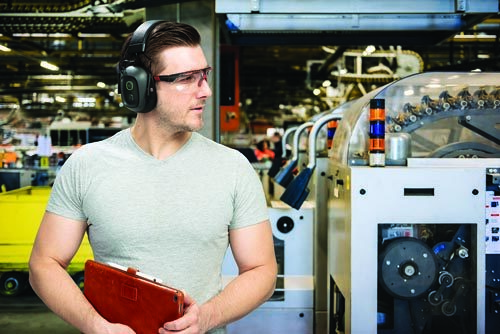Hearing conservation vs. hearing loss prevention
What’s the difference between “hearing conservation” and “hearing loss prevention”?

Responding is Marc Kirsch, product marketing manager, hearing, Honeywell, Charlotte, NC – with contributions from Fastenal Co., Winona, MN.
The Hierarchy of Controls tends to cover the basics to meet the standards of a hearing conservation program. Let’s cover some of the problems workers face and a few ways hearing loss can be proactively addressed and prevented.
Many readers may have personally experienced a threshold shift or know someone who has noise-induced hearing loss – the most common permanent and preventable occupational injury in the world. It’s also highly compensable, which is why we should all face it together, head-on.
OSHA hearing standards are designed to prevent hearing loss but commonly encounter a lack of compliance because of perception, personality and other variables. Here are a few of the top concerns that negatively affect hearing conservation programs:
- According to the World Health Organization, an estimated 1.1 billion young people worldwide are at risk of hearing loss because of unsafe listening practices. This means more workers will enter employment with existing hearing loss.
- Work conditions can be dynamic and unpredictable. Hearing conservation programs address environmental noise but have a hard time obtaining an accurate picture of the noise exposure for a specific task, making calculating risk at the individual worker level difficult.
- Employee objections: “It’s difficult to hear in noisy environments,” “I’m used to the noise,” “I’m uncomfortable,” “I forget” and “It’s dirty.” Blocking out all noise isn’t always the answer. So manufacturers make hearing protection devices that provide many different levels of attenuation, from earmuffs that provide a noise reduction rating of 20 to earplugs that provide an NRR of 33. Additionally, many styles are compatible with other personal protective equipment, as well as multiple dispenser options to make hearing protection readily available.
Understanding the importance of personalizing hearing loss prevention is the key to long-term protection. Losing your hearing isn’t a badge of honor – it can, and should, be prevented. Here are a few ways it can be done:
- Work with your distributor to identify and select PPE that features technological improvements such as foam quality and adjustability. Both can help provide lasting comfort.
- Fit testing is critical to support employee knowledge and motivation. Understanding what works best for employees helps personalize the experience. In addition to training employees on the proper fit of earplugs, consider a stemmed product that’s easy to insert, along with offering multiple types of earplugs to ensure comfort for all workers.
- In addition to fit testing, new methods to personalize hearing loss prevention include providing new data points and tools. Smart hearing solutions are being introduced to the industrial market to encourage a change in worker behavior. This can mean identifying individuals most likely at risk of noise-induced hearing loss, sharing insights with them about their behavior and designing personalized hearing conservation programs to meet their needs. Smart hearing solutions provide personal noise exposure monitoring to industrial hygienists and supervisors, allowing them to see what their employees are hearing and improve safety regulation compliance.
Editor's note: This article represents the independent views of the author and should not be construed as a National Safety Council endorsement.
Post a comment to this article
Safety+Health welcomes comments that promote respectful dialogue. Please stay on topic. Comments that contain personal attacks, profanity or abusive language – or those aggressively promoting products or services – will be removed. We reserve the right to determine which comments violate our comment policy. (Anonymous comments are welcome; merely skip the “name” field in the comment box. An email address is required but will not be included with your comment.)

